the 17th edition of the Biennale de lyon is here
The 17th Biennale de Lyon, running from September 21st, 2024 to January 5th, 2025, promises a bold reimagining of France’s premier contemporary art event. Curated by Alexia Fabre, director of the Beaux-Arts de Paris, this edition is themed Les voix des fleuves – Crossing the Water, exploring the fluidity of human relationships and our connection to the environment. Using the Rhône River as a metaphor for interconnected waterways, the exhibition fosters unity and collaboration, engaging over 15 areas in Lyon’s metropolitan region and Auvergne-Rhône-Alpes. With a strong focus on community involvement and fresh artistic voices, it invites visitors to experience site-specific works that resonate with the region’s places, stories, and people.
designboom had the pleasure of visiting the 2024 edition of the Biennale de Lyon which introduced two new venues: Les Grandes Locos, a former industrial building complex used as a SNCF train maintenance center in the 20th century, and the heritage site of the Grand Hôtel-Dieu, a former hospital from the 12th century, curated in
conjunction with the programming of the Cité Internationale de la Gastronomie de Lyon. Artists featured in both new and old venues include Jeremy Deller, Oliver Beer, Nathan Coley, Mona Cara, Hans Schabus, Matthias Odin, and many more.
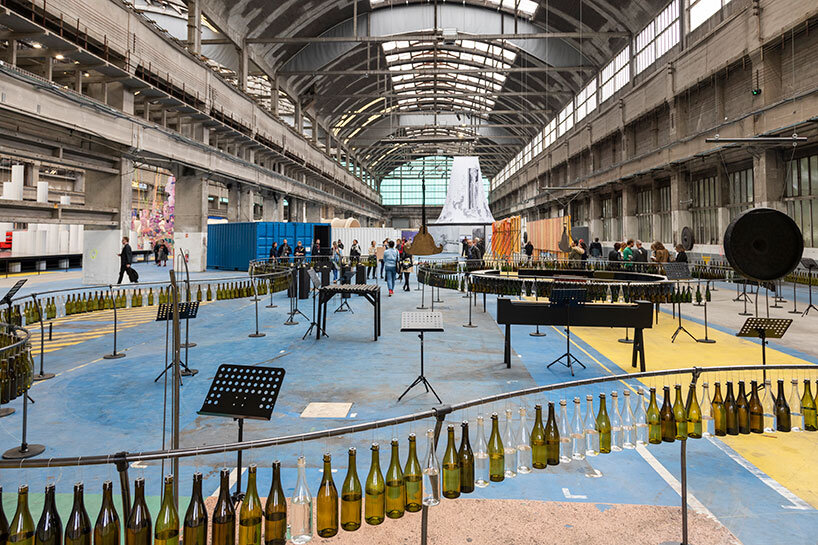
inside Les Grandes Locos | image by Jair Lanes
Grandes Locos — a symbol of strength, repair, and protest
Situated along the Rhône River, just downstream from its junction with the Saône, Les Grandes Locos is a complex of industrial buildings spanning several dozen hectares. Originally inaugurated in 1846 by the Compagnie des Hauts Fourneaux, Forges et Ateliers d’Oullins, the site later became an SNCF train maintenance center in the 20th century. These factories, which bear witness to French railway history, were operational until 2019 for the maintenance of electric locomotives and spare parts. Now transformed into a cultural venue, they are hosting the 17th Biennale de Lyon (find more here), where the site’s history will echo through the artists’ works, exploring themes of travel and movement, repair and care, collective strength, and protest.
‘The Grandes Locos illustrates the theme of the 17th edition of the Biennale, devoted to human relationships. The Grandes Locos is, in fact, a place, a specific site, even a landscape where nature has taken over and which is steeped in human history—a history of labor and industry. We are, after all, in the factories where trains were manufactured and repaired for many years. This history is still present. It can be seen on the floors and walls of this modern cathedral,’ guest curator Alexia Fabre shares. ‘The artists have created artworks and worlds that interact with the architecture and spirit of the place. These artworks reveal traces of labor, evidence of repair work, but also its political history, as the vast premises were also a site of resistance during the Second World War and have always been a place of activity. It’s a place that reminds us of the sheer power of coming together, and through the artworks created by the artists, it shows us how much stronger we become when we work together—much like the Seine and Rhône rivers that merge around the corner at the confluence.’
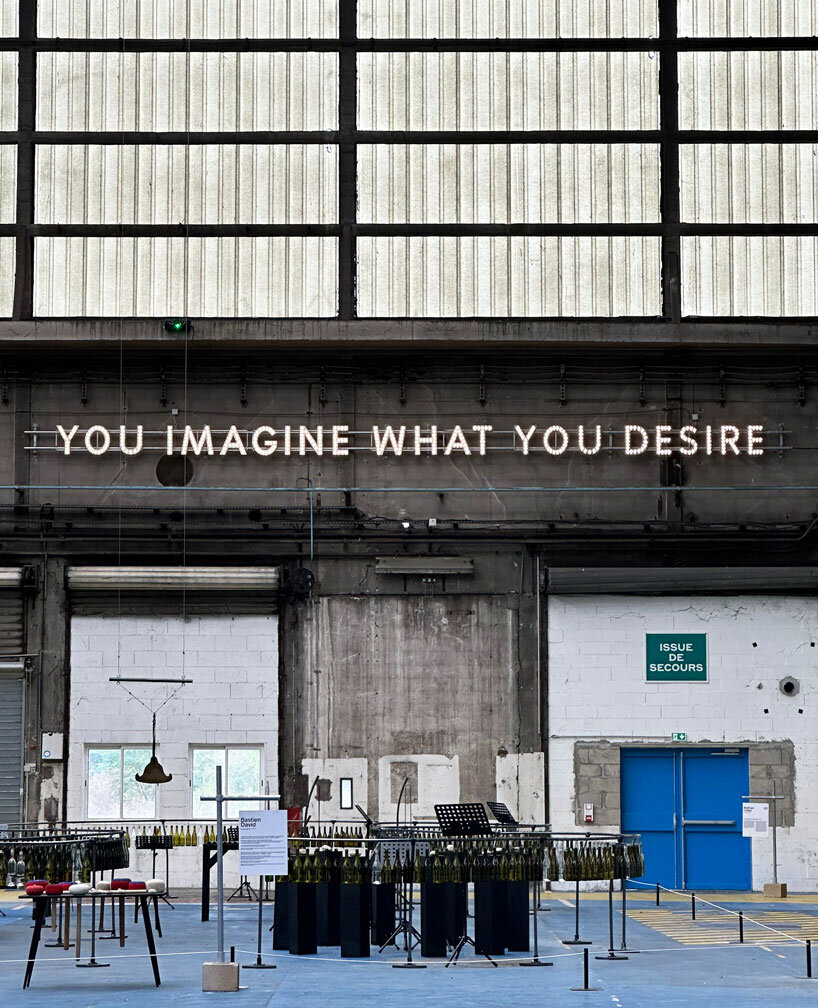
the industrial interior of Les Grandes Locos site | image © designboom
Oliver Beer explores acoustic resonance
Inside the industrial structures, large-scale installations from various artists from all across the globe unfold. Visitors to the new site can find an expansive installation by composer and cross-disciplinary artist Oliver Beer, known for creating sculptures, installations, videos, and immersive live performances that reveal the hidden properties and musicality of objects and spaces.
This year at the Biennale de Lyon, Beer presents The Resonance Project – The Cave, an exploration of the acoustic phenomenon of resonance, where sound waves created by material or bodily vibrations lead to oscillations. The project has adapted to diverse locations, ranging from the sewers of London to the escalator shafts of the Centre Pompidou. However, it consistently incorporates the voice, the body, the surrounding architecture, and a specially composed score to highlight the site’s natural frequency. ‘It’s part of a series I’ve been working on for many years, where I go into an architectural space and find the note that will make it sing to you,’ the artist explains. ‘By that, I mean you can sing one particular note in a room, and if that note resonates perfectly with the space, it will reinforce itself and sing back to you exponentially louder than you are singing (…) It’s a surreal experience to hear your voice coming from the walls around you, rather than from your own body.’
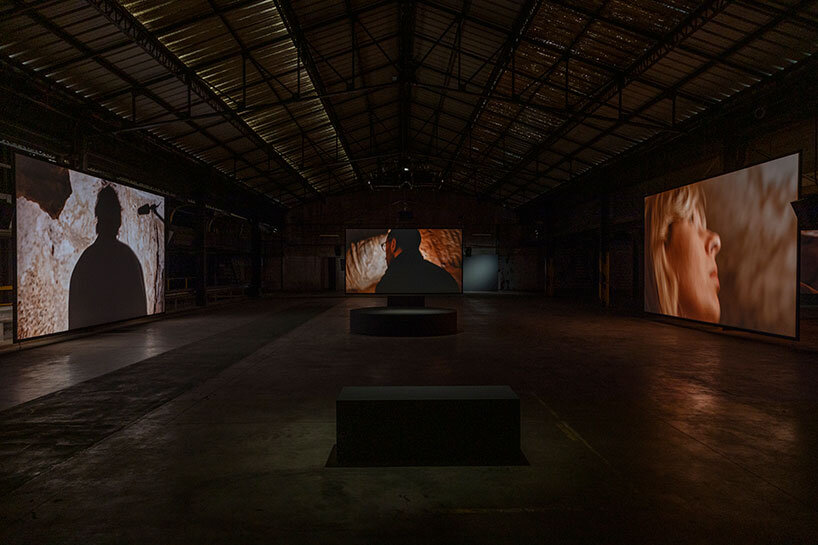
The Resonance Project – The Cave by Oliver Beer | image by Jair Lanes
Banners of Protest: Jeremy Deller’s Fusion of Art and Activism
British artist Jeremy Deller, known for his interest in social history, politics, and music, has developed a multidisciplinary practice that spans conceptual art, performance, installation, and video. Favoring collaboration over working with objects, Deller brings together people from diverse backgrounds to create encounters, objects, and events, ranging from local festivals to documentary archives and political banners.
Since 2000, Deller has collaborated with Ed Hall, a maker of trade union banners, to produce a series of contemporary visual expressions that challenge the formation of identities—whether individual, collective, national, or marginal. Displayed at the Biennale, these banners were originally created for public spaces and feature messages that resonate with a broad audience. The vibrant signs carry slogans like More Poetry is Needed, Smoking Kills, and Every Age Has Its Own Fascism. Through their use of varied colors and heights, the banners evoke the energy of street processions and festival parades. ‘I love processions,’ Deller has said. ‘As humans, it’s in our DNA to be instinctively drawn to large public events that bring us together.’ Accompanying the banners are videos that document artistic workshops and political gatherings, further enhancing the installation.
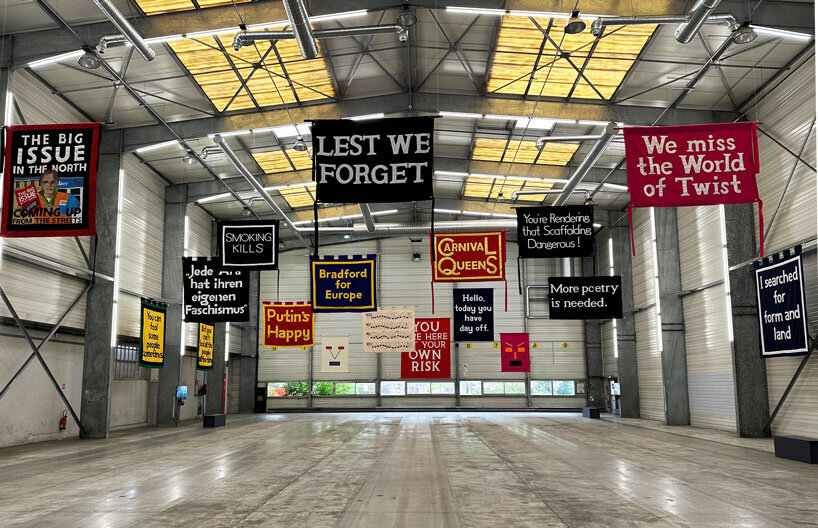
Jeremy Deller’s vibrant fabric banners | image © designboom
Hans Schabus’s Monument for People on the Move
Hans Schabus’s sculptural and architectural installations arise from a deeply personal engagement with exhibition spaces and their contexts. He investigates the interplay between his artworks and their environments by employing unexpected materials and making the most of unconventional circumstances. Through radical techniques such as hollowing out, filling in, banding, and cutting, Schabus deconstructs and reconstructs spaces, prompting visitors to reassess their bearings and movement, thus gaining a new perspective on the exhibition site.
At the Biennale, Schabus presents a wooden tunnel sculpture titled Monument for People on the Move. ‘My work is about the principle of moving and staying, being in one place and moving from place to place, or moving without having a destination,’ the artist says. ‘It follows the scale of an Airbus A321 (…) It’s actually a huge cylinder or tube, and I thought this would be a good element for this large space. I would say it’s a work about movement and counter-movement, of being inside or outside. It’s a work that, in some way, questions identity and the relationships between identities. Who am I, and who are we? How are we connected?’ The two elements of Schabus’s project—the airplane and the turtles—interact harmoniously, with the turtles providing stability to the entire structure. The reptile sculptures symbolize slow, natural movement, contrasting sharply with the rapid motion of the airplane.
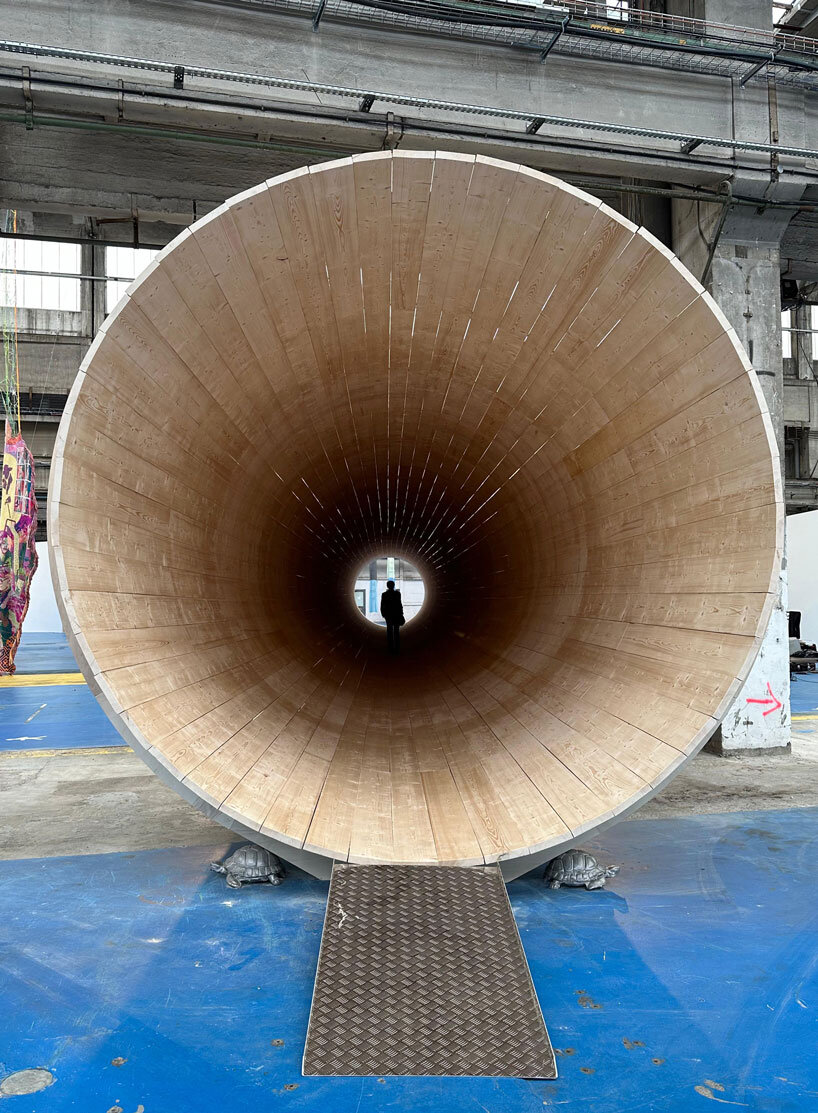
Monument for People on the Move by Oliver Beer | image © designboom
Mona Cara’s Cactus is A Playful Tapestry of Symbols and Stories
Mona Cara works at the crossroads of tapestry and comic strips, creating hybrid textile pieces that transform the chaos of the world into a joyful apocalypse. In her exploration of the pictorial and sculptural possibilities of warp and weft, she blends traditional, manual craftsmanship with industrial techniques like jacquard weaving, which allows her to program intricate patterns and varied textures into her pieces. Drawing on a range of children’s imagery, Cara takes a playful, roundabout approach in her tragi-comic works that probe the dysfunctions of contemporary society.
For the Biennale, Mona Cara has crated a vibrant woven cactus blending a variety of playful symbols and references.
‘My work is always about telling a story. And for the Lyon Biennale, that story is a collective one that takes place in a cactus town. Here, I wanted to create an interaction between lots of characters, inspired by real people who all go to a café, Café Vola, which actually exists (…) This piece was produced through an enormous joint effort, involving drawing, weaving, lace, and stitching. There was a lot of discussion, and many people contributed to creating the cactus. I’d even say hundreds of people,’ the artist mentions. ‘All sorts of visual references, all sorts of iconography can be found in my work. You’ll find images from classical paintings, as well as toys, symbols, and much more. There is always an opportunity to create a story from these different ideas, which are often rooted in popular culture.’
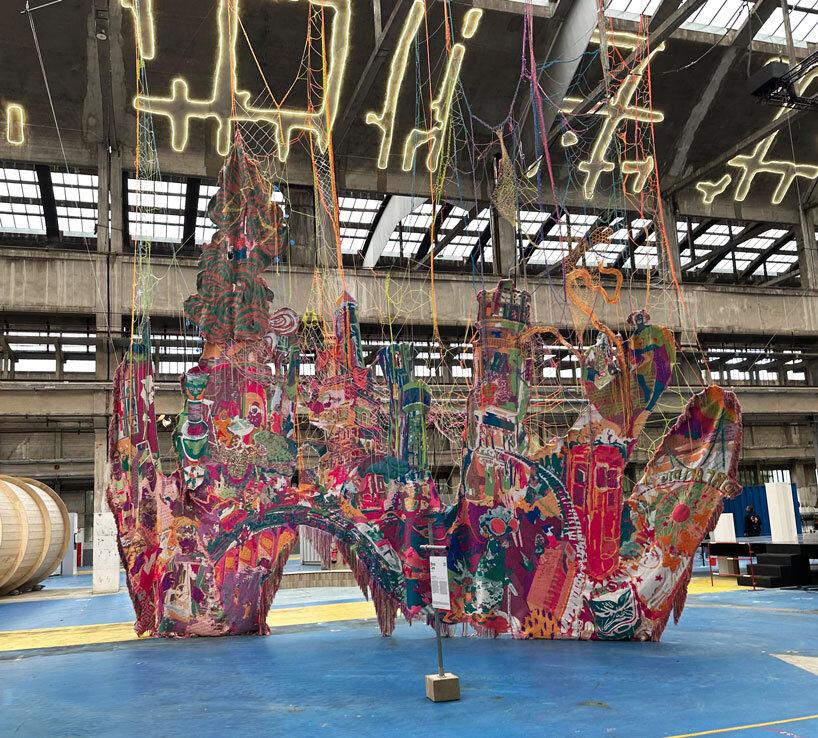
Mona Cara’s woven cactus | image © designboom
The Biennale also retains its historic site, the Musée d’Art Contemporain de Lyon, alongside other familiar venues: the Musée des Beaux-Arts de Lyon, the Fondation Bullukian, and the Institut d’art contemporain de Villeurbanne. The event also takes place in two unusual public spaces, the Lyon car parking site LPA Saint Antoine and the Lyon Metro Station. Artistic director Isabelle Bertolotti explains that the use of these two unexpected venues is ‘an opportunity to display the artwork in other contexts and above all, free of charge to a very wide audience’. This year, the event is also being held at Musée gallo-romain Saint-Romain-en-Gal, where contemporary pieces are displayed within the permanent exhibition.
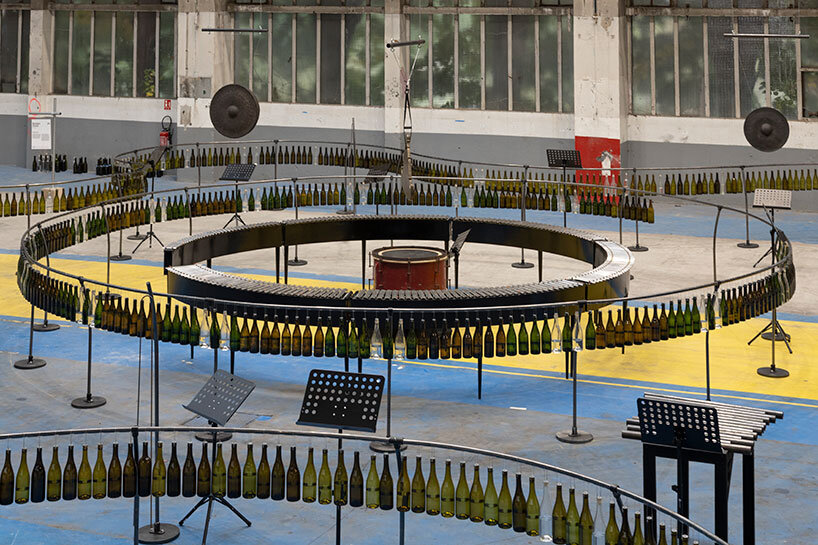
image by Jair Lanes
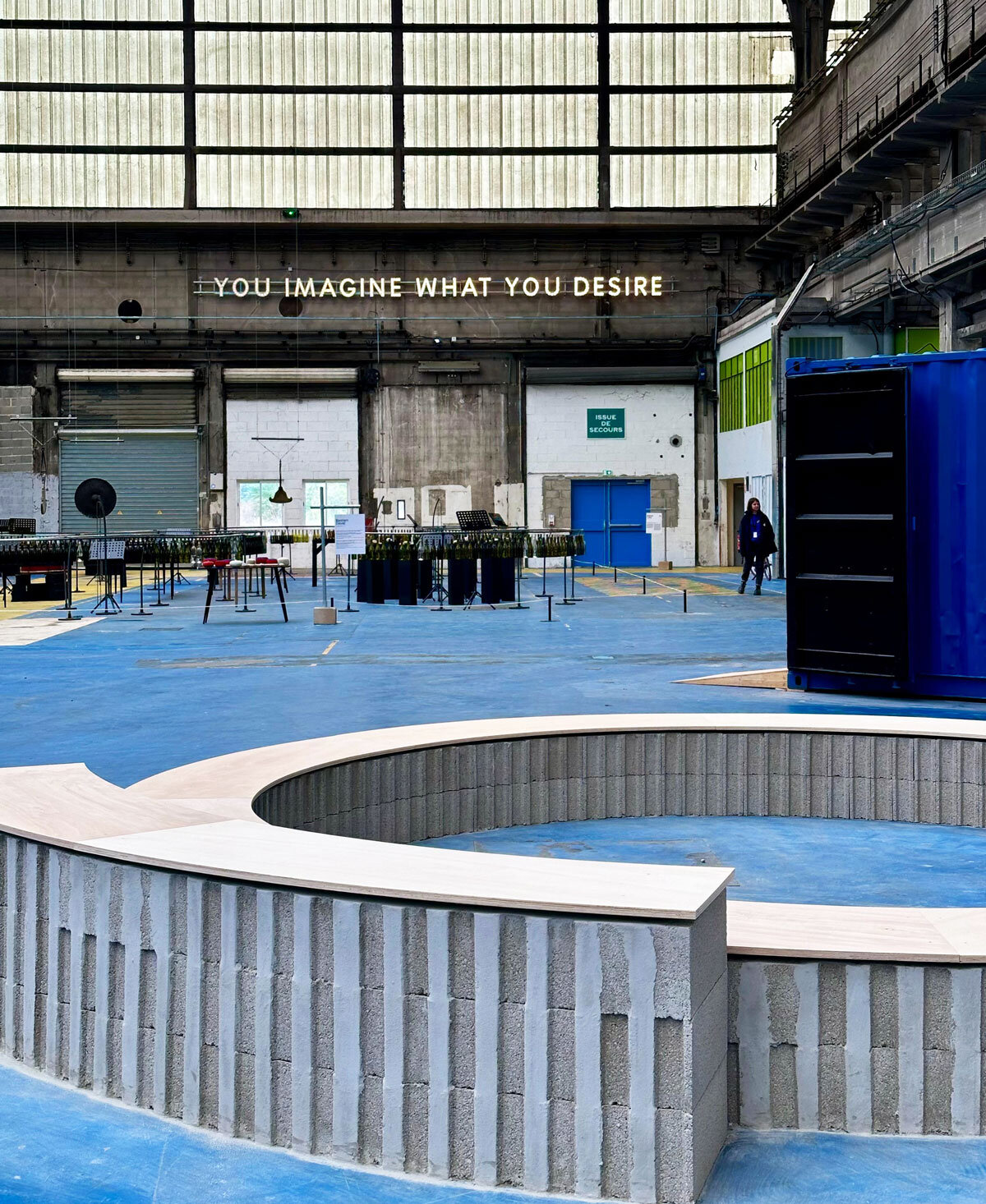
image © designboom
